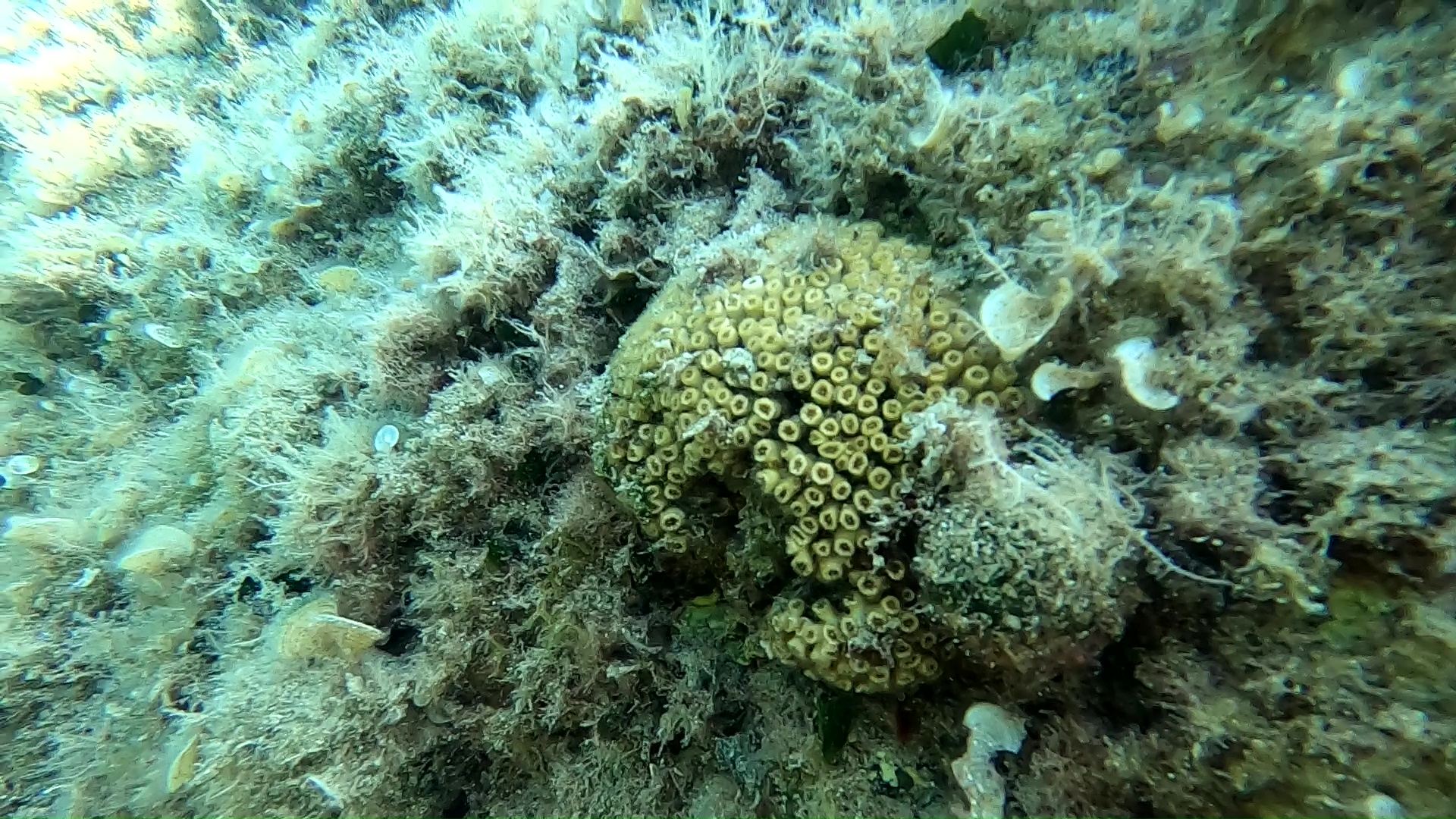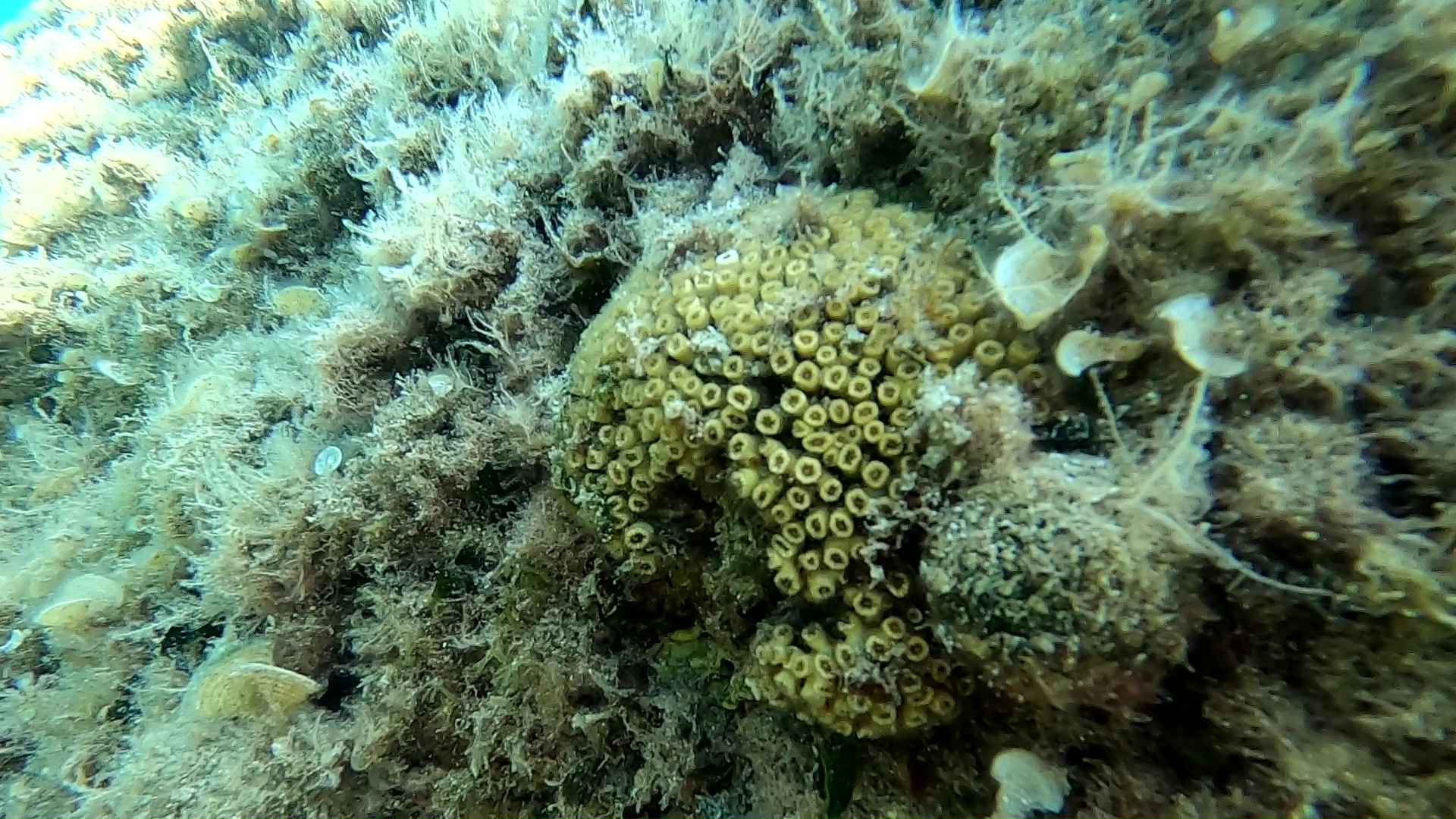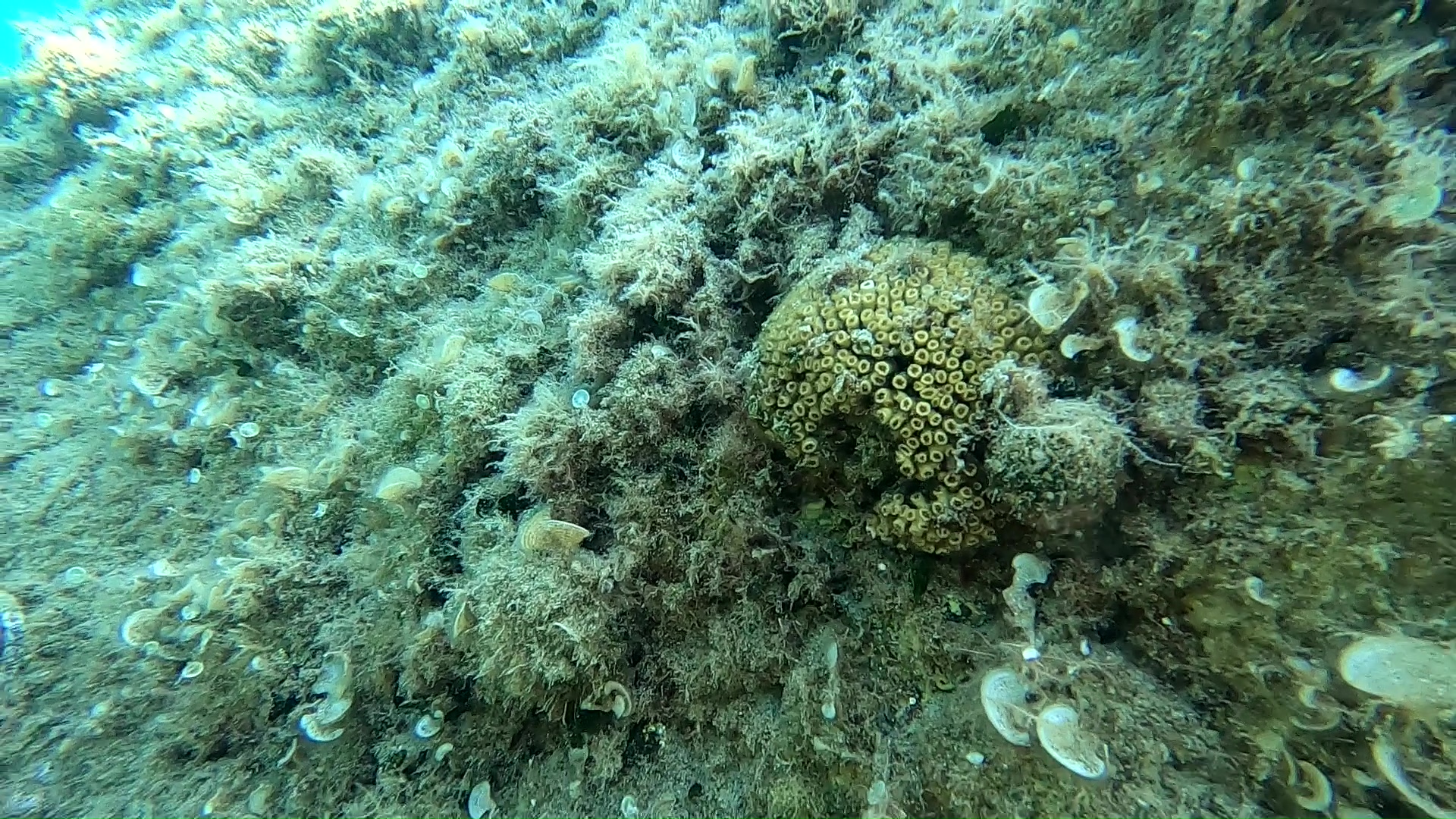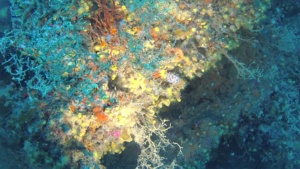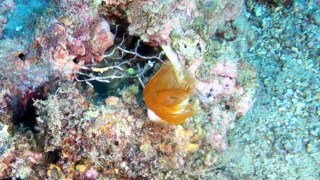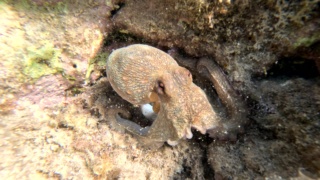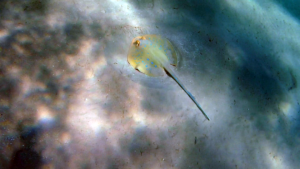Cladocora caespitosa, Cushion coral Madrepora, is the typical madrepora of the Mediterranean and is also considered the most important endemic bioconstructor coral of the Mediterranean Sea.
Cushion coral Cladocora caespitosa Madrepora a cuscino www.intotheblue.it
It forms colonies often isolated, but sometimes capable of forming aggregations. Low densities are recorded in the Adriatic (populations are slightly declining), while in other areas the species is in great expansion (for example in the Ligurian Sea, where temperatures are lower and favor this species with a cold affinity).
It lives in symbiosis with algae, the zooxanthellae of the genus Symbiodinium. It produces deposits of calcium carbonate with which it forms the calcareous cases in which it lives. It is the largest madrepora in the Mediterranean Sea, reaching even 50 centimeters in diameter.
This specimen of a few cm in diameter was filmed in apnea on a seabed a few meters deep made up of sand, rock and areas of Posidonia oceanica, the typical seabed of the Mediterranean Sea.
Description
The polyps are a clear maroon colour, around 5 mm in diameter and form cushion-shaped colonies, in symbiosis with Zooxanthella algae. They produce deposits of calcium carbonate which form the calciate structures in which they live. It is the largest stony coral in the Mediterranean, reaching up to 50 cm in diameter. C. caespitosa has an average generation length of about 30 years.
Distribution and habitat
This species is endemic to the Mediterranean Sea, where it is attested already in the Upper Pliocene. It is common on rocky seabeds between a few metres and 60 metres in depth. In the marine lagoon of Veliko Jezero, in the marine reserve of Mljet island, Croatia, there is a small coral reef made up of C. caespitosa. It was believed to be the only true coral reef in the Mediterranean. Recent findings in the Adriatic Sea show that Cladocora c. is not the only one reef building specie of the Mediterranean Sea.
Reproduction
The colonies grow through budding, but the species spreads through the settlement of plankton-like larva on seabed suited to colonisation.
https://en.wikipedia.org/wiki/Cladocora_caespitosa
https://it.wikipedia.org/wiki/Cladocora_caespitosa
Gallery
 English
English Italiano
Italiano
